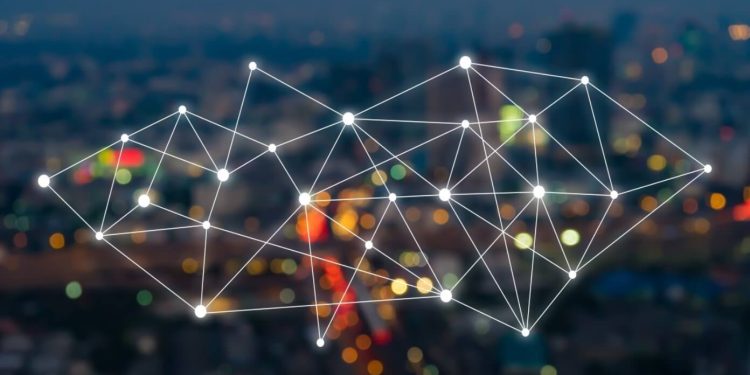Data is the most valuable resource for businesses worldwide. However, in the context of IoT or Internet of Things, data secure a most prominent position – a much higher than you could imagine. IoT has the latent to make the significance of data practically limitless.
For instance, if your organization has more than a million sensors in the field, these sensors continually collate as well as share a large number of data points at each second of a given day. The prominence of IoT in business comes down to this data inundation.
The capability of IoT Data Management
The combination of IoT and data helps various industries, including manufacturing and other industrial processes, intending to improve efficiency, automation, and productivity. This is the reason why IoT gets applied in practice at below industries:
- Health monitoring tools in the healthcare segment
- Telemetry data from several autonomous vehicles
- Sensors and Supervisory Control and Data Acquisition (SCADA) systems in the oil & gas industry
- Factory machines, equipment, and devices used in the manufacturing process
IoT helps businesses leverage the power of big data, which was accumulated by machines several years ago. It utilizes these data for real-time analytics that brings in quicker, more precise business decisions.
Gain the Highest Value from IoT-Generated Data
Investments in IoT tools and technologies have immensely benefitted organizations worldwide. With the rapid changes and the continual advancement in the tech segment, businesses can apply data analytics in association with IoT. For example, one can carry out actionable marketing by employing data analytics for product usage. This IoT analytics will undoubtedly enhance both the safety and surveillance abilities via video sensors and the application of analytics procedures.
Improved Management of Real-time Critical System
With all the interconnected IoT devices, businesses are capable of analyzing the massive amount of real-time data, which helps in monitoring the entire set of assets, products, and everyday business operations. These data insights will additionally aid business owners in remote asset tracking, security, fraud detection, and real-time supply chain visibility, which offers better operations for a company.
The analytical solutions built around these real-time business data, using AI and machine learning techniques, are also helping organizations in permitting predictive analytics and intelligent operations.
Enterprises Follow Logical Data Management Approach
Logical or right-to-left thinking is a widely accepted framework by various industries. It begins by defining a wider-use case and your ultimate objective. Once done, businesses are required to question themselves about the resources and tools necessary to achieve this end goal. As soon as the answer is found, they are requested to ask more specific questions such as:
- What are the different data points you need to retrieve the indispensable information?
- What are the various platforms you need to secure the above data points?
The more you question yourself, the more gaps in your business operations will surface naturally.
Involves Certain Level of Experimentation
This approach, the one that includes IoT and data strategy, requires businesses to create some amount of hypothesis before beginning to execute. In simple terms, having a concrete hypothesis or level of experimentation is crucial here. IoT consists of “what-ifs,” which is then augmented when the resolution includes Artificial Intelligence or any of the machine learning components. Without obtaining a standardized hypothesis to compare the past and the present results, one cannot paint meaningful insights regarding business success.
Formation of Reiteration Procedure
One cannot merely execute the IoT project that does not move past the proof-of-concept stage. Instead, the chief goal of any organization must deliver actual value from the new data and not any theoretical value. And, this necessitates prioritizing iteration over process or business perfection.
Furthermore, businesses must apply creative thought alongside testing the IoT data against any given hypothesis. That is, one has to tweak a particular element (if possible) to make the project even more valuable. They can also implement digital twins into the standard business operations to speed up the process without massive investments.
Challenges of IoT and Data Merger
On the other hand, alongside significant opportunity lies IoT challenges when it comes to business data. We may find over 90% of industries increasing their investments in the latest technologies such as artificial intelligence, machine learning, and big data, however, the graph of data-driven companies is trending downwards.
Moreover, IoT rollout is also proven to be more challenging than anticipated. As per the Microsoft survey result, respondents agree that only 70% of their IoT projects moved ahead of the proof-of-concept stage.
Although IoT has the potential to enhance the value of the company’s data at an exceptional rate, businesses need to ensure that they have good platforms and processes to handle it.

Mary Grealy
Mary Grealy is president of the Healthcare Leadership Council, a coalition of chief executives of the nation’s leading healthcare companies and organizations. The HLC advocates consumer-centered healthcare reform, emphasizing the value of private sector innovation. It is the only health policy advocacy group that represents all sectors of the healthcare industry. She was appointed to the position in August 1999. She previously served as Washington Counsel for the American Hospital Association and was Chief Operating Officer and Executive Counsel for the Federation of American Hospitals.
Ms. Grealy has an extensive background in healthcare policy. She has led important initiatives on the uninsured, improving patient safety and quality, protecting the privacy of patient medical information and reforming the medical liability laws. She testifies frequently before Congress and federal regulatory agencies. Ms. Grealy has a bachelor’s degree from Michigan State University and a law degree from Duquesne University.







